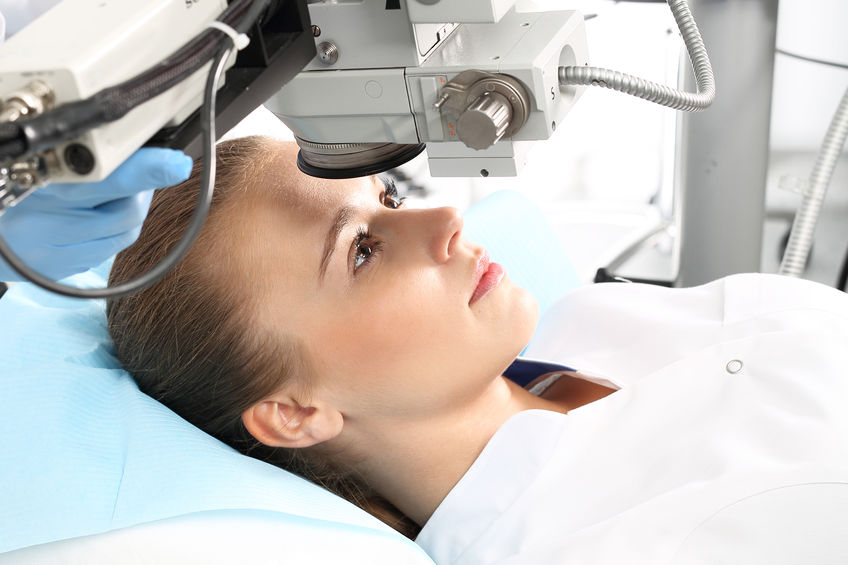If you’re responsible for health cover for staff based in Kenya, the good news is that local health insurance is now a much more viable option than a few years back. Similarly, if you’re looking after staff based in other east African countries, regional health insurance that covers treatment in Kenya could be an attractive option.
Quite a change given that not long ago even a simple surgical procedure for someone based in Kenya would have warranted a trip abroad. So what has happened?
Well, medical care in Kenya has made great strides in recent years. Between 1995 and 2014, government health spending doubled from 6.4% to 12.8%, according to the World Bank. This has brought great benefits for overall health and longevity, with life expectancy now at 63 compared with 52 in 2000.
The past decade has also seen a steady rise in funding from international donors and NGOs, as well as investment from private organisations, further helping to strengthen the country’s health infrastructure.
With that in mind, let’s take an in-depth look at the developments that have taken place in Kenya’s health sector over the past few years – and where it could save money and provide better health outcomes for your employees based in the region.
Growing investment
Kenya’s new constitution, introduced in 2010, passed responsibility for delivering primary healthcare from national to county governments, with the aim of improving access to care, especially for those living in rural areas.
As the Kenyan economy has grown, so has the middle class, and with it has come increased demand for accessible, high-quality health services. According to a report by the World Bank, by 2014 Kenya had established a well-developed health infrastructure network covering more than 9,000 facilities.
Today there’s a good mixture of public and private provision, with around 60% of primary healthcare facilities run by private or faith-based organisations, plus a growing number of good-quality private hospitals. In fact the private health sector in Kenya is one of the most developed and dynamic in sub-Saharan Africa, according to a 2016 report by the Netherlands Enterprise Agency.
Today there’s a good mixture of public and private provision, with around 60% of primary healthcare facilities run by private or faith-based organisations, plus a growing number of good-quality private hospitals.
International healthcare providers
Kenya has long benefited from international medical expertise, thanks to doctors from around the world volunteering their time to provide treatment and training, especially at faith-led facilities such as Kijabe Hospital. Some highly skilled doctors from countries such as India have permanently relocated to Kenya while others split their time between Kenya and their home country.
The popular Aga Khan University Hospital has recently undergone renovations to now include new cancer and heart centres, as well as changing from a regular hospital to a teaching facility. The hospital is also the first in East Africa to receive the Joint Commission International (JCI) accreditation and continues to perform pioneering treatments, such as Neurointerventional surgery and a rare procedure of extracting platelets; ensuring patients no longer have to travel abroad to receive world-class care.
Private health facilities are increasingly being set up in Kenya by foreign organisations or international partnerships. Indian company Narayana Hrudayalaya is soon due to open a state-of-the-art tertiary care hospital in Nairobi. The Narayana Health Hospital promises to provide top-quality care across a full range of specialities for much less than existing private hospitals in the country. An Indian-Kenyan partnership, Medanta Africare, is also set to begin building a new 200-bed hospital in Nairobi this year.
Indian doctors are particularly prized in Kenya due to their reputation for expertise and efficiency, which accounts for the traditional high levels of medical tourism to India. But now, those in Kenya who might previously have travelled abroad for treatment are often able to find good-quality care closer to home.
Incoming health tourism
So it used to be that people left Kenya to seek medical treatment. Now, the trend is starting to reverse, with an estimated 3,000 to 5,000 foreigners travelling to Kenya for treatment from nearby countries such as Burundi, Rwanda, Tanzania, and Uganda, as well as Europe and the USA.
This is all in accordance with the Kenyan government’s Vision 2030, which envisages Kenya becoming ‘the regional provider of choice for highly specialised healthcare’. Indeed, health tourism doesn’t just have the potential to boost the country’s private health sector but also its economy as a whole.
In 2013 the government released a health tourism strategy, as part of its mission to ‘keep Kenyans in Kenya and bring Africans to Kenya through the development and provision of world-class specialised healthcare products, technologies and services’. And in 2015, the Kenya Tourism Board signed an agreement with health tourism specialists A&K Global Health to make it easier for people to find care in Kenya to meet their needs and budget.
Better skills at lower cost
While high-quality healthcare is increasingly available in Kenya, the charges for some treatments can still be high for much of the population. However things are starting to improve.
Kidney transplants: In 2014, a kidney transplant in Kenya could cost up to USD 20,000, while a patient could have the same procedure in India, plus travel there and back, for around USD 17,000. This, coupled with long waiting lists and the low availability of reliable dialysis machines and trained staff in Kenya, made India a more attractive option.
In 2014, a kidney transplant in Kenya could cost up to USD 20,000, while a patient could have the same procedure in India, plus travel there and back, for around USD 17,000.
However, more recently the costs of kidney transplant surgery in Kenya have started to come down as levels of expertise and numbers of facilities go up. Staff and students at Moi Teaching and Referral Hospital have now benefited from eight years of kidney transplant surgery training thanks to surgeons from an Amsterdam-based hospital. And in 2015, the East African Kidney Institute opened at Kenyatta National Hospital to further develop expertise in nephrology and urology.
‘Kenya is becoming a more cost-effective place in terms of some of the skilled services it’s offering,’ explains Dr Amit Thakker of Kenya Healthcare Federation, who cites appendicectomy, laparoscopy, and keyhole surgery in particular – noting that over the past decade, citizens of 22 countries have visited Kenya for treatment.
IVF: In 2014, around 70% of the people who travelled to Kenya through medical tourism company A&K Global Health came for in vitro fertilisation (IVF) treatment. Kenya’s fertility sector is booming. Since the first IVF babies were born in Nairobi in 2006, more than 2,000 babies have been born in the country thanks to the technique.
The clinic that carried out the first successful treatment, Nairobi IVF Centre, run by obstetrician and gynaecologist Dr Joshua Noreh, is still one of the leading providers. It charges USD 3,675 for one cycle of IVF, compared to typical costs of USD 6,770 in South Africa, or USD 8,000+ in the UK.
Aga Khan University Hospital has also become a major provider, carrying out three to four IVF cycles each week. Plus, other new clinics are springing up, including the Harley Street Fertility Centre, which opened in Nairobi in 2016.
Eye clinics: Another growing area is eye surgery, with some of Africa’s most advanced eye clinics based in Nairobi. People from countries as far afield as Britain, Italy and Norway have flown to Kenya for treatment at clinics such as Eye & U Ophthalmics and Laser Eye Centre. Kenya is one of the few countries in the developing world to offer the minimally invasive laser eye surgery technique cTEN.

Pushing medical boundaries
Kenyan scientists have produced some ground-breaking medical research in recent years.
In 2014 Dr Faith Osier from the KEMRI Wellcome Trust Research Programme won the Royal Society Pfizer Prize for her work on understanding the mechanisms behind malarial immunity. Some of her colleagues have also been involved in testing the effectiveness of a new malaria vaccine, which could save millions of lives. In 2015, 3,804 children under the age of five died from malaria in Kenya alone.
KEMRI, which stands for Kenya Medical Research Institute, has been recognised as a centre of excellence in malaria, nutrition, and virology by the World Health Organization. Its research has also played an important role in the fight against HIV/AIDS.
Meanwhile, Aga Khan University is developing a strong research focus, concentrating on areas such as diabetes, cardiovascular disease and cancer, as well as infections, immunity and neurosciences.
Aga Khan University is developing a strong research focus, concentrating on areas such as diabetes, cardiovascular disease and cancer, as well as infections, immunity and neurosciences.
Kenyan hospitals have performed some exceptional surgery in recent years. In 2016 a team of more than 70 surgeons and support staff at Kenyatta National Hospital successfully carried out an incredibly complex separation of conjoined twins. The successful operation brought together open-heart surgery, organ transplant, and reconstructive surgeries.
Care close to home
Your employees can now rest assured that, if necessary, they will receive excellent healthcare right here in Kenya.
If they do need surgery or other treatment, they can expect to be treated promptly and get back to work and normal life as quickly as possible, without the added stress of long-haul travel. This is even more relevant for those who need ongoing care, as they are more likely to be able to continue working between treatments, which could dramatically reduce absenteeism.
With increasing levels of home-grown and international medical expertise, the future is looking bright for Kenya’s health sector.

